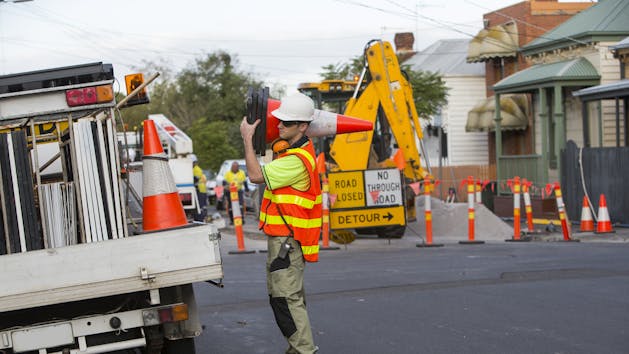Find the right solution for your business with our free Fleet Management Buyer’s Guide.
Introducing New Technology Into Your Business
It’s always interesting to see how different generations view each other. When you’re a kid, you think everyone over 30 is old, and everyone over 40 has one foot in the grave. In fact, a recent article in the Mirror featured a Twitter user who received a birthday card detailing what young children think about being 40. According to Jennifer Turner, age 8, “I am 40. I am turning old. I just left work because I cannot manage going up and down hills. I know I will soon die.” Cheers!
On the other hand, older (not old, just older) folks sometimes view younger generations with suspicion as well. The Internet is rife with articles about how millennials and Generation Z are changing the workplace, language, fashion, social media, etc., and not all of them are favorable. You might call this the “Get Off My Lawn” viewpoint – but it’s inevitable that young people will always annoy some “old” people.
In many workplaces, these generational clashes play out on a daily basis. As younger people enter the workforce and older workers prepare to retire, many businesses have a varied mix of ages and backgrounds to contend with, and it can be hard to meet everyone halfway while still running the business efficiently.
For example, it makes sense to incorporate technology into a fleet business. This will make the younger crowd happy, but the workers approaching retirement age are unlikely to jump right on board with learning something new, especially because fleet technology can be intimidating to many people.
So how do you make the kids happy while making the old fogeys comfortable, too? Check out the below tips.
Outline the benefits
Before shoving any gizmos at your staff, explain to them exactly how this latest and greatest tool is going to help them do their jobs more efficiently. If they are able to see why it’s good for them as well as the business, they’ll be more open to learning it.
Make sure it’s easy to use
This one is pretty obvious, but that doesn’t mean it’s not incredibly important. Not everyone on the staff grew up enveloped in screens, so for those employees for whom technology isn’t second nature, choose an intuitive solution.
Give proper training
Some people are just good at figuring things out no matter their age or level of tech savvy, but that’s not true of everyone. Walk through demonstrations of the solution and be ready to answer any questions. Let your employees play around with the new workplace technology. Also, if the solution you’re implementing comes with any kind of customer support hotline or chat, make sure employees have access to it.
Ditch the jargon
When explaining the new solution, leave out any words that sound too “tech-y” to avoid confusion. If someone is getting hung up on what the heck “HTML” or “metadata” mean, then they’re missing the important stuff – and getting frustrated with the technology before they even work with it.
Don’t trash all of your “analog” tools
In 2014, a 300-year-old British bank responded to the growth of digital banking by discontinuing the leather-bound desk diaries it had traditionally gifted to its customers. The customers were irate (in the classy, polite British sense of the word), and the bank reversed its decision. Likewise, just because you introducing fleet technology doesn’t mean you should force it where it doesn’t belong – so don’t make your field workers ride around on hoverboards.
Don’t choose robots over humans
Using technology in a fleet doesn’t mean customer service goes out the window – in fact, one of your goals in implementing the solution in the first place should be to help things run more efficiently, which will trickle down to the customers when job orders can be assigned and handled more quickly. Remind your employees that the customer’s satisfaction is the most important part of the business, and their needs come before any workplace technology.
Speaking of technology, visit our Resource Center and sign-up for our monthly newsletter to get more content just like this!
Find out how our platform gives you the visibility you need to get more done.




